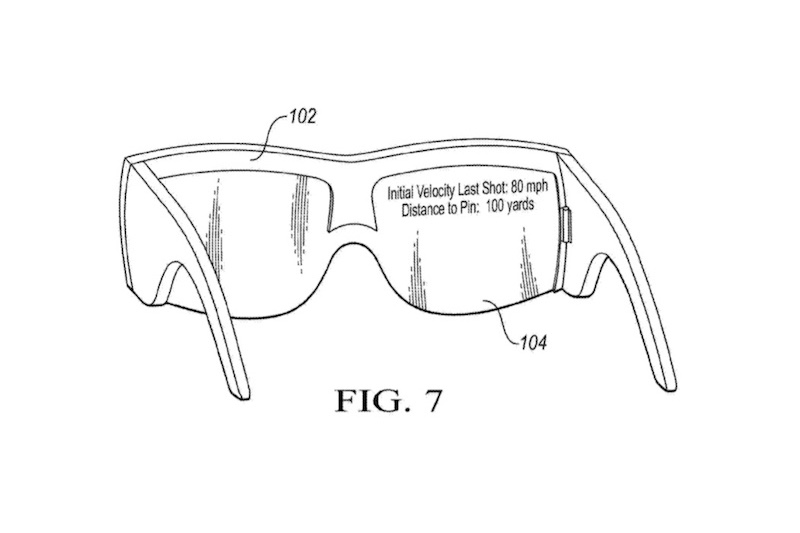
Nike may have exited the golf equipment business, but that doesn’t mean the company isn’t still looking at ways that technology can help improve our games. A recent patent filing revealed a potential new product in the works that could bring allow players to track the location of their ball and more accurately read putting greens thanks to data that is projected onto a head-up display.
The diagrams that accompany the patent show a set of glasses and a high-tech golf ball that is equipped with “communications components.” Presumably, the golf ball is paired with the glasses to help relay information to the golfer, including the velocity of the last shot, the ball’s current location, and the distance to the pin. The system can also keep track of the golfer’s current score, the number of fairways hit, the greens in regulation, and the average number of putts. All of that data is displayed on a small screen that is incorporated into the glasses.
The patent indicates that glasses would include an onboard camera for capturing photos or video from the golfer’s point of view and for plotting the trajectory of the ball. An integrated user-tracking system is part of the system as well, accurately pinpointing exactly where the golfer is on the course at any given time. This will then help the golfer find his or her ball while also alerting them to potential hazards such as sand traps, doglegs, and water.

When approaching the greens, the system is designed to read the topography of the terrain from the location of the golfer and the ball. That information would then be displayed using augmented reality technology, overlaying the undulations of the green in real time over the golfer’s view of their actual surroundings. In theory, this should help athletes to spot changes in the terrain, allowing them to more accurately read their putts.
As is typical with a patent of this type, there is a lot of detail on what this augmented reality/head-up display could do, if it ever became a reality. The patent itself was filed on Thursday, March 8, but there is no guarantee that it will ever become a real consumer product. That said, there are probably a lot of frustrated golfers who would love to have this technology at their disposal.
If you have the inclination, you can read the entire patent on the U.S. Patent and Trademark website.


